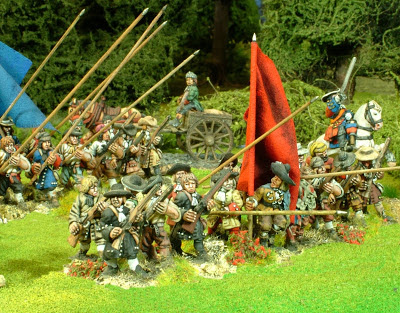The Williamite Force
Even less is known about the Williamite troops as Newtown if
the majority of sources are considered. It is likely that they were mostly
Enniskillen men as the town was a centre of Protestant resistance or at least
that they were local to the County
Fermanagh England Tiffin 20th
June 1689 , roughly one month before the battle. His regiment was
raised in Enniskillen and made up of local men who later fought at the Boyne and Namur Tiffin
Dragoons are mentioned and in the clash at Lisnaskea mounted men underBerry Hamilton Hamilton
Dragoons are mentioned and in the clash at Lisnaskea mounted men under
Again I have left the data from the re enactors website till
last. They state that the following Williamite units were at Newtown;
Wolseley’s Horse, Wynne’s Dragoons, Gustavus Hamilton’s, Zachariah Tiffin’s
& Colonel Lloyd’s regiments of Foot. This actually tallies a lot closer
with what I have discovered by crossing referring other sources. The men are
all stated to be Enniskilleners and at typical strengths for the war in Ireland
The troops ratings for both sides are arbitrary but reflect
the fact that the conflict had not long started, most of the Protestant
regiments were less than one month old and that the efforts of both sides had
exhibited amateurism both at leadership and company level. The Jacobite Horse
are widely accepted to have been disciplined, brave and formidable in relative
terms. I have listed the Beneath the Lily Banners morale classes and suggest
that if BLB is used to play the game at regimental level, players make sure
each foot regiment has a central stand of pikemen and is only allowed to fire
muskets with two stands of figures.


.jpg)